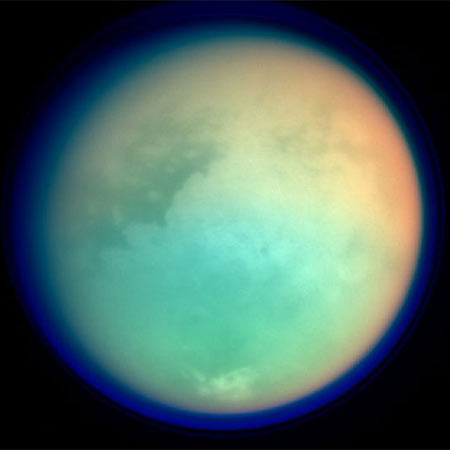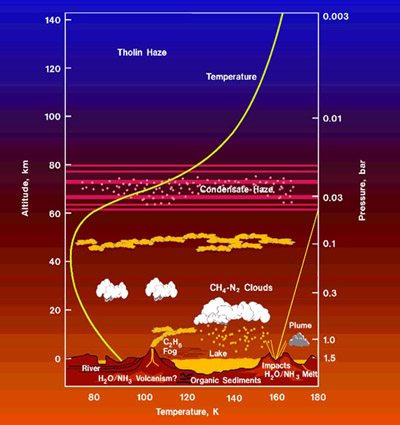|
It's the Astronomy Online non-Blog, or un-Blog.
Everyone has a blog now and since I am no follower of trends, I decided to merge the blog with the website. And I don't want to neglect the website in favor of posting on the blog.
These are the pages that were on the blog of old:
- Home
- Archive (Index of Pages)
- Me
- Current Trends
- Links
- Soho Live
Links:
Google Maps - Mars
Google Maps - Moon
HiRISE
HiRISE - MRO Imaging
Mac Singularity
Meade4M
Slackerpedia Galactica
Software for the Mac
Starry Night Online
Venus Maps
More Favorites:


































Thank you for visiting!
|
|
 |
|
Titan Revisited:
More than a year has passed since the Huygen's probe successfully landed on the surface of Titan (landed on January 14, 2005). While I am still rather upset with the media in that almost no information has been released regarding this most impressive endeavor, I am here to report the cursory findings.

BBC Image
A paper was published in Nature magazine by the Huygen's team - led by Christophe Sotin. The results are (adopted from Sky and Telescope, March 2006, page 16 - 17):
- The Huygens probe landed within 7 kilometers of the target zone
- The Huygens Atmospheric Structure Instrument (HASI) detected higher than expected temperature and density, with a maximum temperature of -86 degrees C at 250 kilometers and a low temperature of -203 degrees C at 44 kilometers. Atmospheric pressure is 1.5 times Earth's at sea level.
- HASI detected electrical discharges at 60 kilometers - possible lightning
- HASI detected superrotation of the atmosphere - that is atmospheric wind speeds are greater than planetary rotation, up to 430 kilometers/hour. Wind flows west to east until 7 kilometers above the surface - it changes to an east-west direction.
- Descent Imager/Spectral Radiometer (DISR) determined surface winds speeds at only 3.5 kilometers/hour
- Ratio of nitrogen-14 to nitrogen-15 indicates most of atmospheric nitrogen escaped into space
- Comparisons of carbon ratios indicate no carbon "biota" on Titan
- Methane ratios indicate replenishment of methane in the atmosphere - strong evidence for methane volcanism
- Huygen's Aerosol Collector and Pyrolyser indicates an atmosphere containing ammonia, hydrogen cyanide and possibly hydrogen and carbon - links to possible organic material
- DISR shows more abundant methane at the surface than the atmosphere
- DISR also shows the surface lighting (brightness) is the same as 10 minutes after sunset on Earth - with a brownish hue
- Gas Chromatagraph Mass Spectrometer detected organic material precipitated out of the atmosphere - ethane, cyanogen, benzene, and carbon dioxide
- Surface Science Package determined that Huygens landed on solid ground, similar to wet sand
More data on the individual instruments used can be found here.
These results are phenomenal! My opinion of the data so far is that Titan can serve as the laboratory to learn about our own origins on Earth. With the possible lightning discharge and organic materials being precipitated from the atmosphere, I cannot help but be reminded of the Miller-Urey experiment in which organic material was recreated in a laboratory experiment using methane, ammonia, hydrogen and water (plus a little electricity).
To wrap up this post, I present an updated model of Titan's atmosphere - from the JPL website.

Thank you everyone for visiting!
Next Post | Previous Post | Back to Top
|
|

